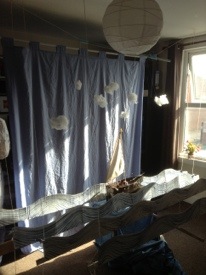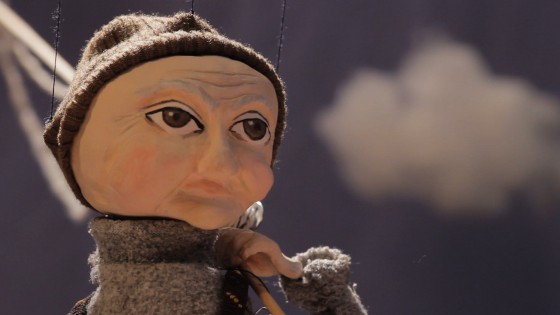
Right now I’m in the middle of shooting The One That Got Away, a tale of an old man, the sea and a mermaid, told using marionettes. Puppets are a fairly new thing to me, my one prior brush with them being the seven-foot-tall Wooden Swordsman in The Dark Side of the Earth. Here are some things you might want to consider if you’re thinking of going all Thunderbirds yourself…
- Puppets are slow. Expect your shoot to take at least twice as long as it would with live actors.
- Puppets can’t do much. You’ll need to break your shots into small chunks because it’s difficult to make a puppet do multiple different things in the same take. In the edit you’ll find yourself favouring the wider shots because the body language of the puppets will typically be far more expressive than the face.
- Make time for rehearsals. It’s a lot of work to build puppets and you may forget, or run out of time, to make sure they will move convincingly ahead of the shoot. Even an experienced puppeteer will need time to get to know your puppets in order to get the best out of them.
- Think carefully before building your sets. Are they going to be big enough to get the shots you need without seeing off the edge? There can be a tendency to focus on making everything work for one master wide shot, but what about your reverses – is there enough set for those too? And where will your puppeteers stand/sit/crouch/lie to operate the characters? If you’re using marionettes you must consider the strings as well, ensuring that no part of the set or lighting equipment will get in their way.
- Sound design and music are important to any film, but with puppets and animation they will often have to do more than their fair share of the work to breathe life into the characters. Get someone good on board to take care of this vital area.
